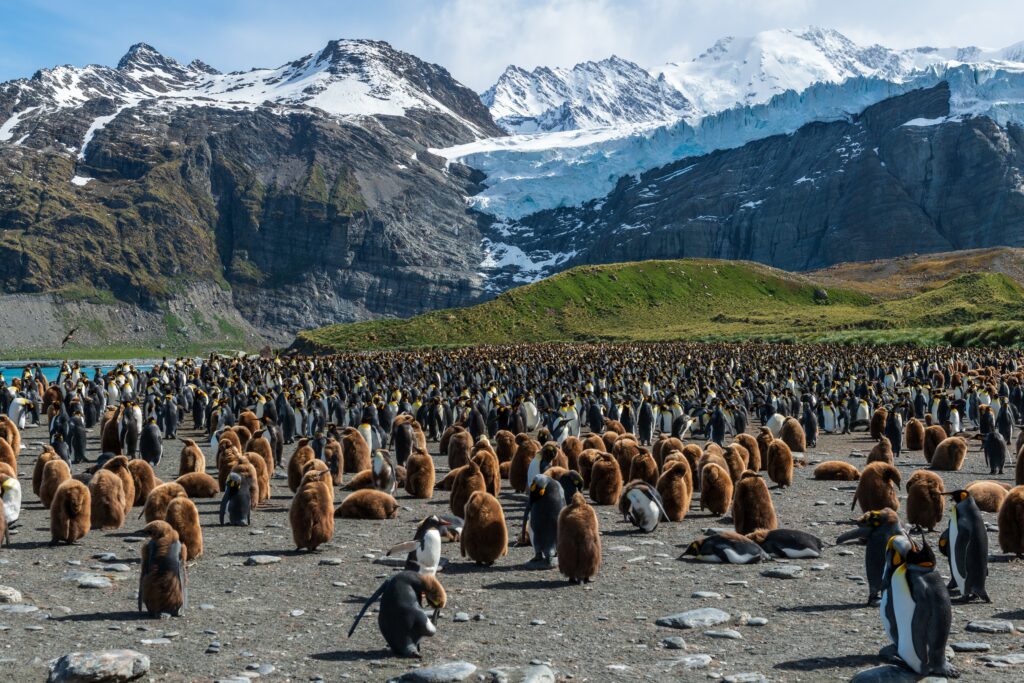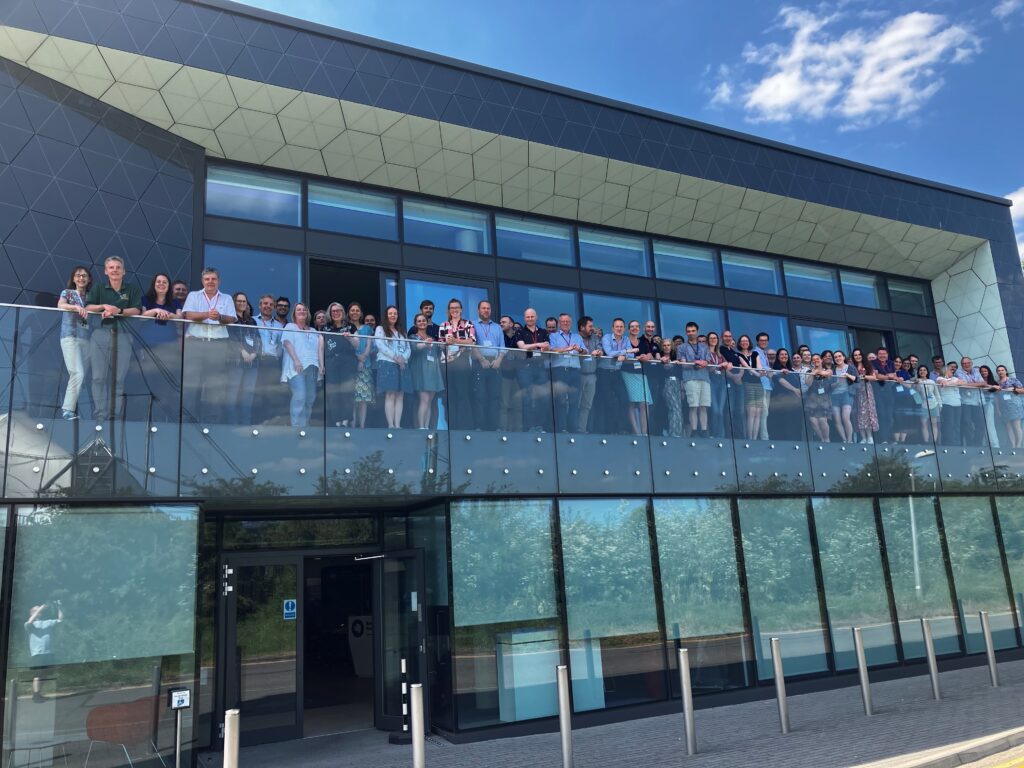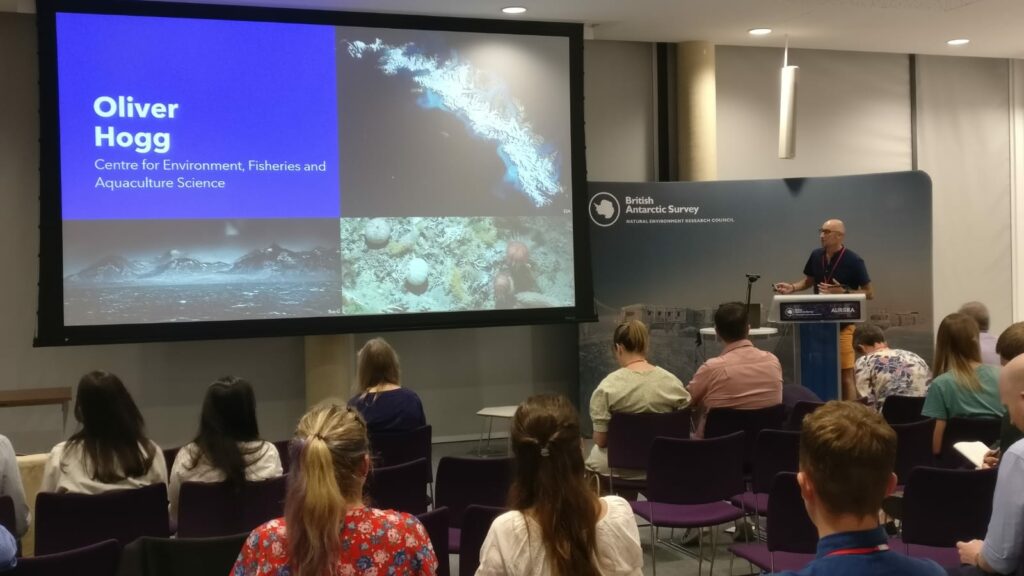
The sub-Antarctic South Georgia and the South Sandwich Islands (SGSSI) are a UK Overseas Territory in the South Atlantic, approximately 1,400 km northeast of the Antarctic Peninsula. They are home to a globally important, diverse and distinct marine ecosystem, with the waters surrounding the islands among the most productive in the Southern Ocean. SGSSI supports some of the largest global breeding populations of penguins and flying seabirds as well as abundant pelagic species, recovering marine mammal populations and diverse benthic communities. The South Georgia and South Sandwich Islands Marine Protected Area (SGSSI MPA) was established in 2012 to protect and conserve the region’s rich and diverse marine life, whilst allowing sustainable and carefully regulated fisheries. The Government of South Georgia and the South Sandwich Islands (GSGSSI) has committed to undertake a review of the effectiveness of the SGSSI MPA every 5 years.
In June, the Government of South Georgia and South Sandwich Islands (GSGSSI) launched the start of its 2nd Marine Protected Area (MPA) review with a two-day Blue Belt funded science symposium at the Aurora Innovation Centre in Cambridge. Over 80 participants travelled to Cambridge to discuss the most up-to-date research from the region with a busy schedule of 51 presentations given by speakers from 21 different organisations over the course of the two days. The symposium was primarily targeted at individuals and organisations who play an active role in undertaking research and monitoring work within the MPA, however the event was also made available via an online webinar to allow anyone with an interest in SGSSI or marine management in general to watch the presentations.
The event brought together individuals from a diverse range of disciplines including physical oceanographers, benthic and pelagic ecologists, fisheries biologists, and higher predator specialists, along with experts in remote sensing, emerging technologies, data management, climate change, citizen science and the fishing industry. The one common thread was that all were connected by the shared geographic link of South Georgia and the South Sandwich Islands. With so much expertise in one room, the event enabled individuals to appreciate how their work fits into the bigger picture of ecosystem management at SGSSI.

The symposium was structured around the different themes within the SGSSI MPA Research and Monitoring Plan with a rich and varied programme of talks and discussions covering research on the whole ecosystem, from studies of tiny phytoplankton to the tracking of mighty migratory whales; assessments of giant penguin colonies to diverse seabed communities. It covered the full breadth of the SGSSI marine environment from intertidal seaweed communities, through to methane seeps on South Georgia’s continental shelf and expeditions exploring the unknown realms five miles below the surface in the depths of the South Sandwich Trench. The unique environment around SGSSI was also put in the context of our changing oceans, with discussion on the impact of climate change on the region’s waters including the recent prevalence of mega-icebergs.
The Blue Belt Programme has worked with the GSGSSI since 2018 providing ongoing support in managing and protecting the region’s marine environments and ensuring sustainable fisheries. At this year’s symposium several key Blue Belt projects were showcased. These included the presentation of results from the Blue Belt funded Discovery Expedition to the South Sandwich Islands, the use of fishing vessels as research platforms for science using novel line-mounted camera systems and the development of interactive management tools to help the GSGSSI quantify fisheries impacts on the regions species and ecosystems.
The Discovery Expedition presentation summarised the findings of a systematic seabed survey of the remote South Sandwich Islands. This was undertaken in response to knowledge gaps identified during the last MPA review in 2018. Using a deep-water camera system, the survey focused on understanding trends in the distribution and diversity of vulnerable seabed ecosystems across both latitude and depth. The analysis presented represents the first attempt to comprehensively characterise the biology and environmental conditions of this region.

The Blue Belt programme has, since 2018, been working in collaboration with the GSGSSI and the South Georgia fishing industry to deploy wildlife cameras attached to longline fishing gear. During the symposium, this work was presented for the first time as a novel means to investigate and monitor the potential ecological impact of longline fishing gear, whilst also providing an enhanced understanding of the seabed environment and the diversity and distribution of the animals that live there.
The science symposium also provided the opportunity for a live demonstration of the South Georgia Risk Tool, a bespoke and interactive model which uses current and historic fisheries data to quantify the impact of longline fishing within the South Georgia and South Sandwich Islands MPA. The audience were shown how the tool can simulate changes in risk to the region’s ecosystems as a consequence of theoretical spatial and temporal changes to the MPA and how this can contribute to current and future reviews of the SGSSI MPA and assist in the management of the islands’ waters.
The review of scientific research during the symposium represents the first step in this year’s MPA review process which aims to capture the best available science. Over the coming months, the next steps will be to assess what progress has been made since the last review against the priorities outlined in the SGSSI Research and Monitoring Plan. To support this process the Blue Belt Programme will work with the GSGSSI to undertake a Protected Area Management Effectiveness (PAME) assessment, an international standard which aims to assimilate all the available science (over 300 peer-reviewed scientific papers since the last MPA review) and identifying any gaps in data and monitoring that may limit our understanding of the effectiveness of management measures. After a final call for evidence and comment, the updated science will be considered alongside the existing SGSSI management measures to assess whether the MPA is continuing to meet its objectives, and to enable GSGSSI to make evidence-based decisions on whether any further enhancements to the MPA are required.
Amongst the key messages from final discussions at the symposium included the importance of maintaining long term monitoring programmes; a desire for security in future science funding and recognition of the importance of maintaining key funding through programme such as Blue Belt.
“It’s hard to believe that we have recently celebrated the tenth birthday of our MPA, and how much the world has changed since our last 5-year review, but one constant has been the commitment of GSGSSI to world-leading environmental management and protection, based on a solid foundation of scientific evidence,” said Dr Mark Belchier Director of Fisheries and Environment, GSGSSI.
For the workshop report and presentations, visit here.
Leave a comment